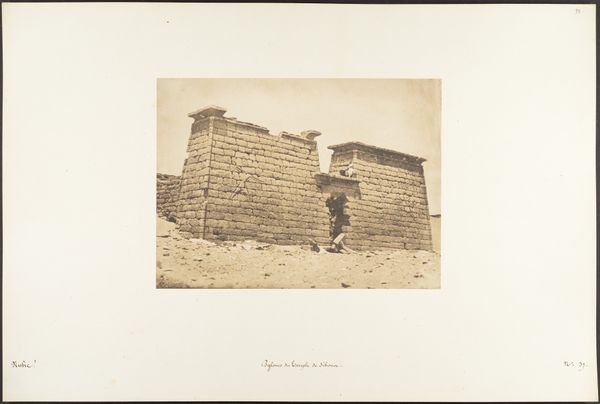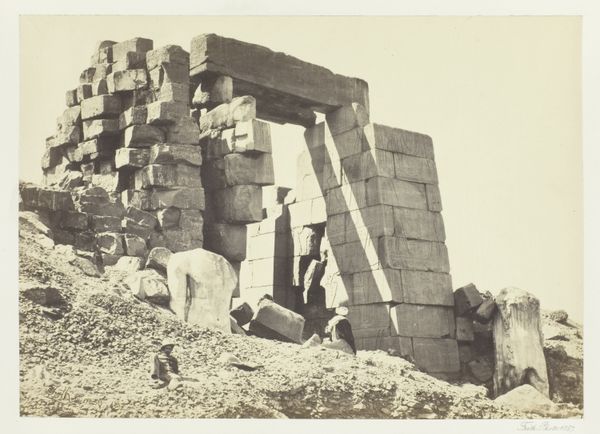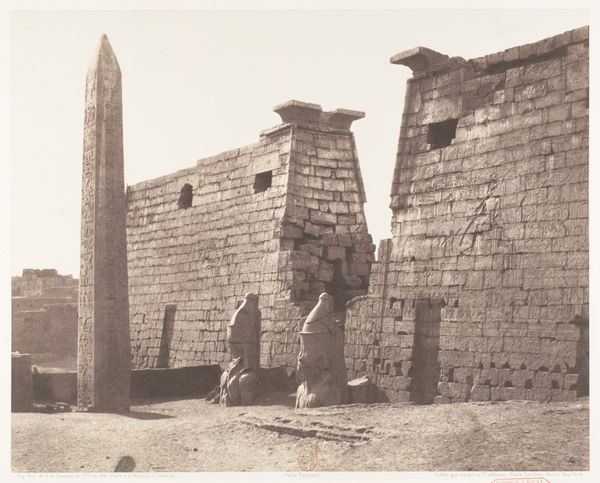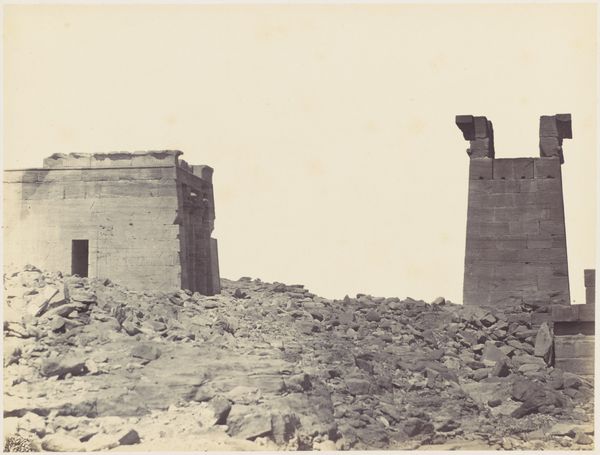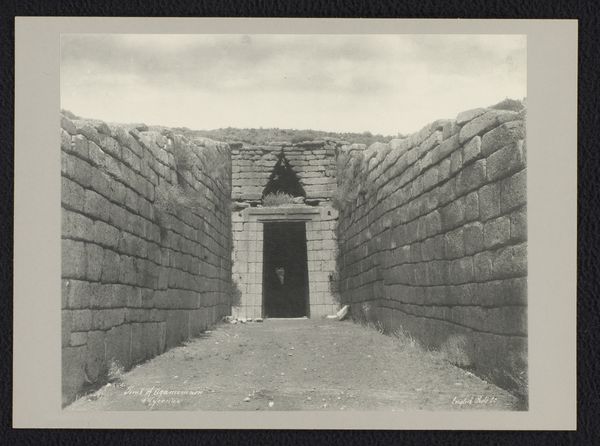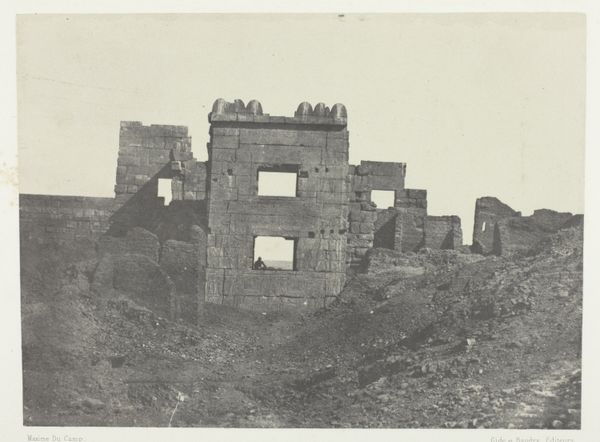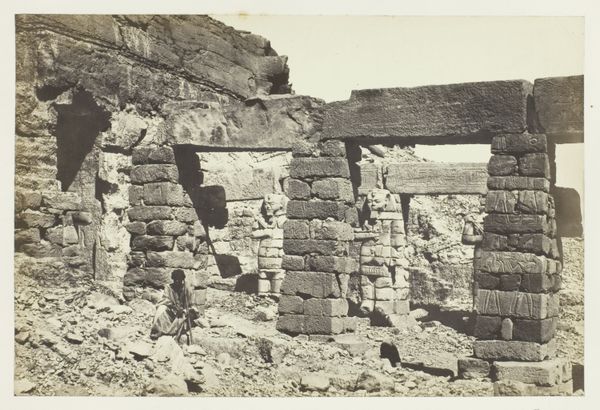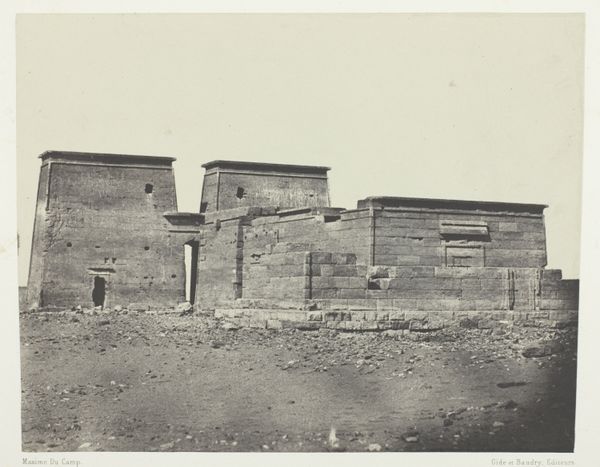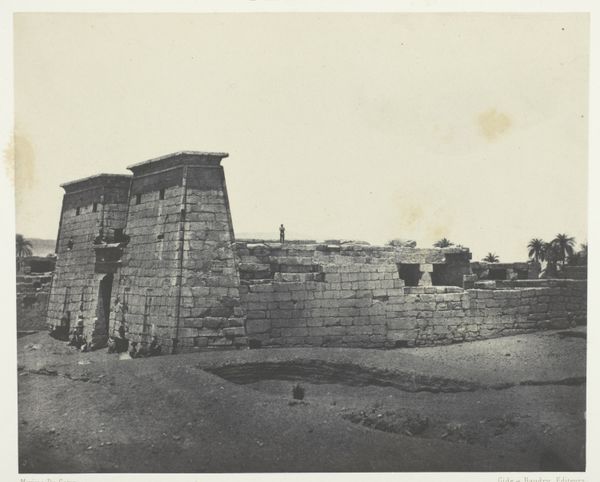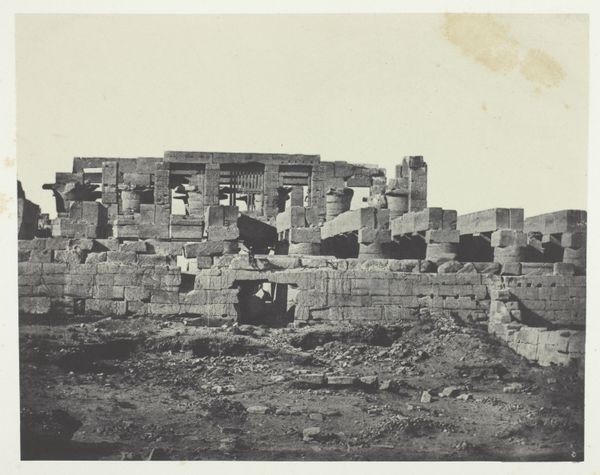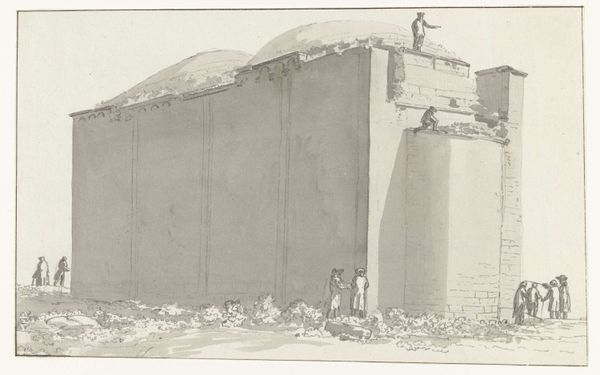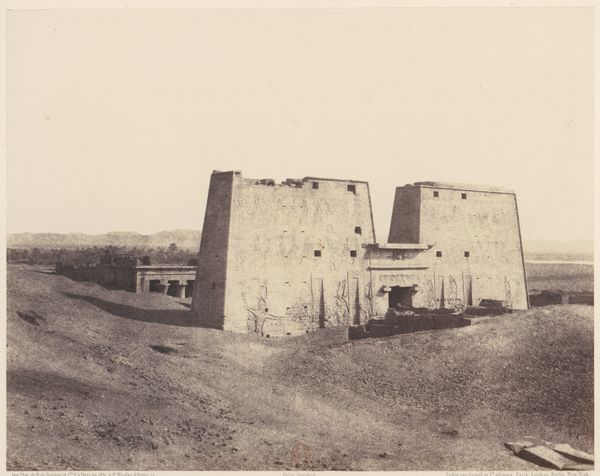
print, photography, architecture
#
photo of handprinted image
# print
#
landscape
#
ancient-egyptian-art
#
photography
#
architecture
Copyright: Public Domain
Curator: This striking image is entitled "Nubie. Hémi-Spéos de Sébour. Pylônes", taken in 1850 by Maxime Du Camp. It presents the pylons of a temple in Nubia. Editor: The immense weight of those stones is the first thing I notice. You can almost feel the sun beating down on them. And then there's the textures of the stones, rough hewn, monumental... It's captivating, isn't it? Curator: Absolutely. Consider this through a postcolonial lens. Du Camp, traveling with Flaubert, documented Egypt not just as a visual spectacle, but as a site of imperial conquest. His images provided Europeans a sense of ownership and control. How do we reconcile the beauty with this complex history? Editor: Right, the act of documentation itself is a process of taking. But I’m drawn to the actual physical labor implied. The pylons, they are obviously made by human hands, the blocks hoisted, carved, fit together. What resources and how much brutal exploitation underpinned such grand projects in ancient Egypt? The material presence whispers stories of forced labor. Curator: Exactly. The image captures a moment of intersection. We witness the fading grandeur of a once-powerful empire as seen through the colonial gaze of a rising one. The scale diminishes Nubian power. Editor: There's a lone figure perched on one of the pylons too – a stark contrast against the scale of everything. Almost like the stones could swallow them whole. The stark tonal range emphasizes the weight and density of the blocks and adds to the dramatic effect of decay and resilience. I'm intrigued by how that individual mediates between these two historical epochs, then and now. Curator: Perhaps it is in that tension—the intersection of power, the weight of history, the skill to create with rudimentary technology–that we can appreciate the multiple layers inherent to this print. Thank you for the insight. Editor: Thanks! Thinking about it from a material standpoint, what lasts, what remains to tell its silent tale and for whom? This is definitely an interesting place to begin that inquiry.
Comments
No comments
Be the first to comment and join the conversation on the ultimate creative platform.
